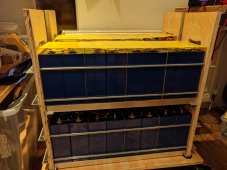So an update - the system is mostly set up and working ok!
The Seplos BMS is working well. The only real issue I had was that my sytem is set up in 2x packs and the link cable between them was too long, and causing a higher voltage on the first cell of the second pack. I rewired the pack (flipped the busbars) so that the cells linked at at the front, and switched the 25mm cable for 50mm, and now it works perfectly.
The ME3000SP is very good too, the KEY thing when setting one up is to "freeze" the CT direction. I didn't with mine, and it all worked ok when the solar exported it detected it as a load and tried to export to match it!
I am using Home Assistant and have the Seplos BMS linked in using ESPHome. The ME3000SP didn't have any ESPHome integration but I am writing a Modbus configuration to monitor and control it (currently a WIP). There is an MQTT bridge for it, but I try and use ESPHome wherever possible. Then it will be possible to directly control the charging/discharging from Home Assistant, eg. as a timer, and also shut it off before a full charge based on solar predictions for the following day.



